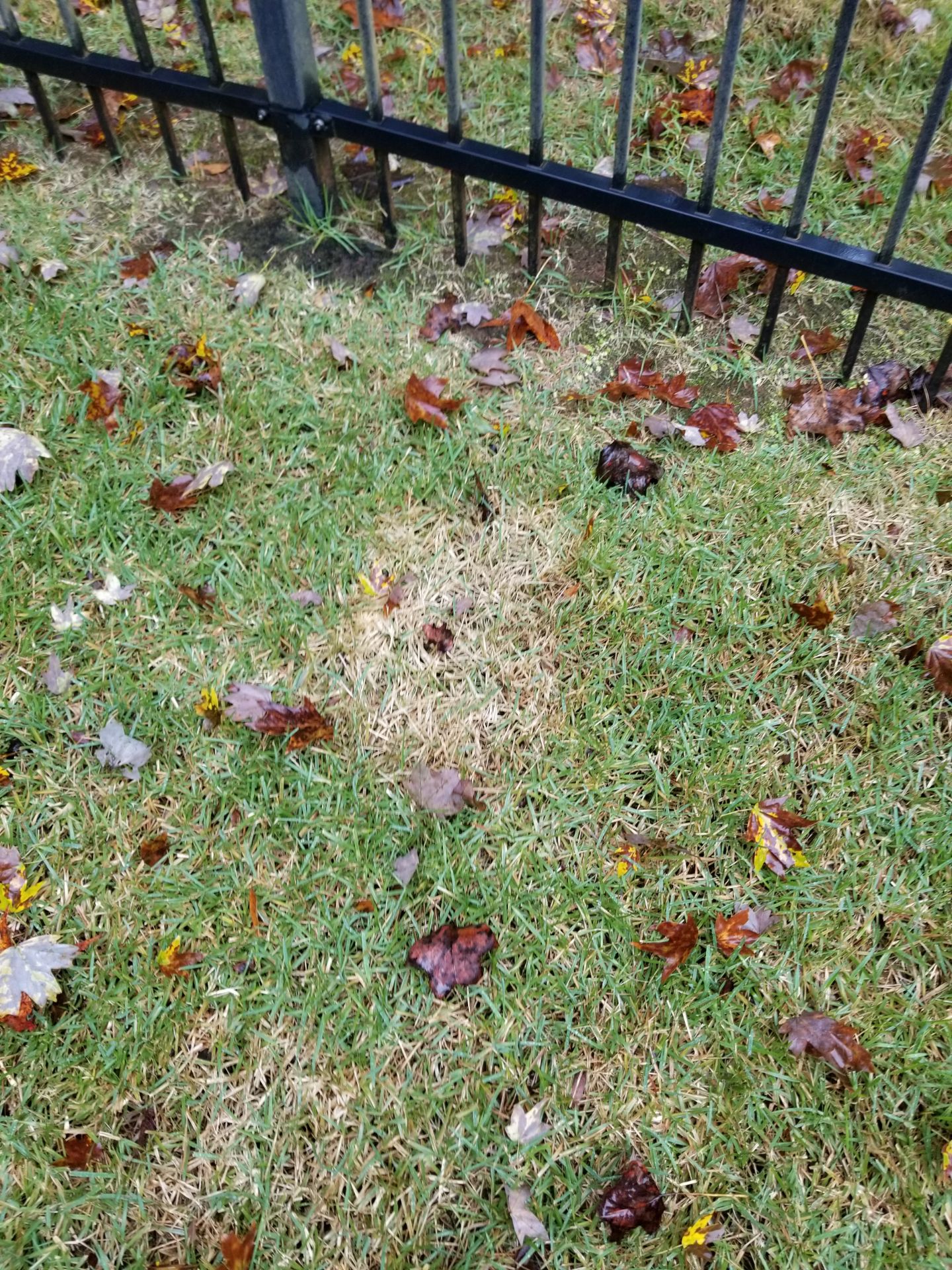Large Patch and Zoysia Patch are common names for a fungus that infects warm-season turfgrasses in spring and fall when turf growth slows. Typical symptoms include round, yellow/orange patches that may exhibit a grey ring on the outer edge as they expand. The center of these patches is often green and actively growing.
Of the grasses we treat, Zoysia is the most susceptible to damage from this fungus. While Bermuda typically outgrows the symptoms, it may express when conditions are ideal for Large Patch development. The pathogen, Rhizoctonia solani, is also responsible for Brown Patch in cool-season turfs.
Mowing & Watering
Healthy turf is most important for resisting symptom expression. Maintaining proper mowing techniques every 7 to 10 days at the height of 1.5-2” is ideal for dense, energy-producing canopies. Taller or shorter cut heights typically express stress symptoms more quickly.
Watering appropriately also reduces excess water. The right amount of water encourages optimal density and root depth while limiting the amount available for fungal development. Too much moisture can result in turf stress, creating an ideal environment for fungus. A good rule of thumb is an inch of irrigation or rainfall over 2 to 3 non-contiguous days during peak growing season. However, pay attention to your turf in spring and fall – they may not require as much.
Aeration & Topdressing
An important and often overlooked maintenance technique is aeration. By removing plugs from the turf, modifications occur to our soil structure. Compaction, excess thatch, and sealing off detract from turf health and contribute to fungal formation. Annual or bi-annual aeration reduces thatch, modifies soil porosity, and increases percolation and gas exchange. All are important to maintain healthy root systems and competitive turf.
Symptom severity, size of the patches, turf species, and time of year all affect the success and timeframe for recovery. Since Large Patch typically injures turf during periods of slower growth, longer recovery times can be expected. Spots present in the spring, if small enough, may recover in the growing season once the disease has been removed.
Regular topdressing and our program encourages coverage from turf at the margins of the patches. Warm-season grasses slow down in the fall, and may not produce enough top growth to overcome the damage before dormancy. It may be next summer before small spots recover. Regardless of when the damage occurs, big spots may require sodding to replace lost turf in areas where anomalies aren’t tolerable.
Our Programs Help Prevent Large Patch
If you find your turf infected with Rhizoctonia solani, never fear; Nature’s Turf is here. We offer programs designed for your turf and timed for our area to suppress Large Patch/Zoysia Patch and a host of other fungal diseases in your lawn. For instances where the disease is present, our trained staff of applicators can treat with curative and preventative products. Give us a call, and team up with Nature’s Turf.








